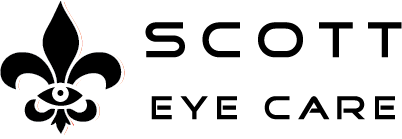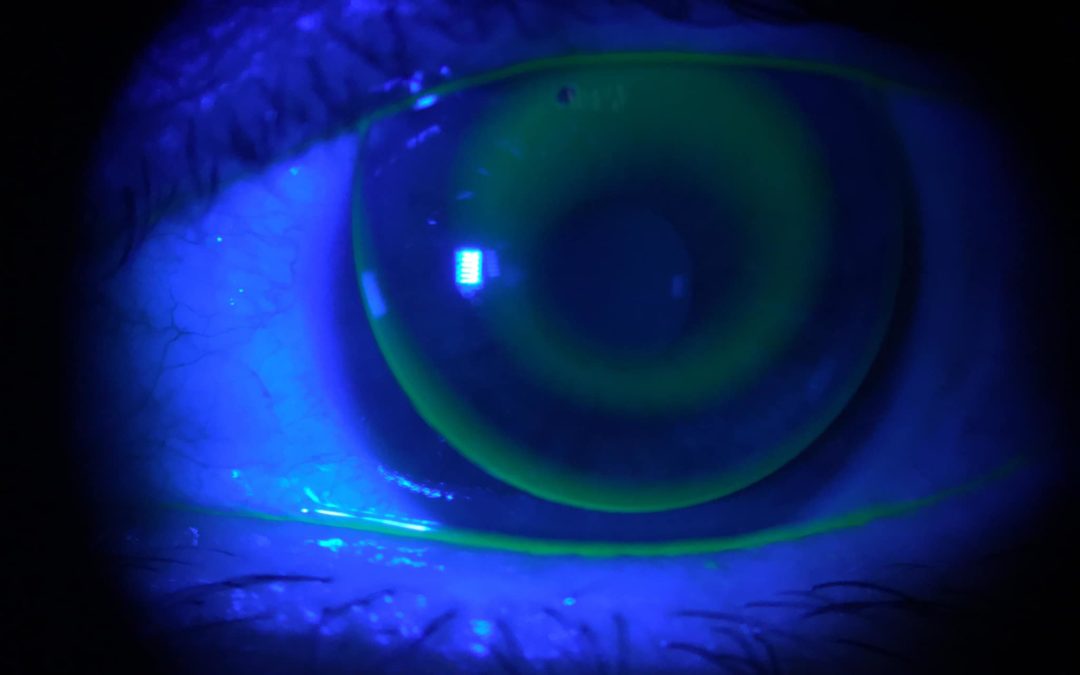Dr. Cazares and Scott Eye Care are happy to now provide orthokeratology (Ortho-K) contact lenses for patients! These specially fit gas permeable contact lenses are worn to sleep, removed in the morning, and for the duration of the day, your vision is clear!
Ortho-K lenses work by temporarily reshaping the cornea to correct for myopia, also known as nearsightedness (up to -8.00 correction). They may also correct some astigmatism (up to -4.00 correction). In some cases, hyperopia (Up to +4.00) may be corrected.
These lenses, branded as EyeSpace Forge Ortho-K lenses, are FDA approved for overnight wear. They are used primarily to correct myopia in adults and to slow the progression of myopia in children.
From AllAboutVision.com
How long does the ortho-k effect last?
You should be able to see acceptably well without glasses or contact lenses for a day or two, sometimes longer. For best results, you should wear the ortho-k lenses every night.
Which vision problems can ortho-k correct?
Orthokeratology is usually used to temporarily correct nearsightedness (myopia).
Ortho-k can also correct lesser degrees of astigmatism.
The type and amount of refractive error that can be managed with orthokeratology differ on a case-by-case basis. Your eye doctor will be able to give you more specific guidance after examining your eyes.
Who is a good candidate for orthokeratology?
Most people with mild to moderate nearsightedness (with or without mild astigmatism) are the best candidates for ortho-k, but people with mild hyperopia and/or astigmatism may also be candidates.
Because the corneal reshaping effect is temporary, little risk is involved, and you can discontinue wearing the lenses at any time — provided you are willing to start wearing glasses or contacts again when your myopia returns.
Children and young adults who want to be glasses-free but are too young for LASIK or are not good candidates for refractive surgery for other reasons (dry eyes, for example) often are good candidates for ortho-k.
People who participate in contact sports or work in dusty environments that can pose problems for contact lens wear can also be good candidates.
Who fits ortho-k lenses?
It’s important to know that orthokeratology is a very specialized type of contact lens fitting, and not all eye doctors who fit contact lenses also fit ortho-k lenses.
If orthokeratology interests you, seek the services of an eye doctor who specializes in fitting these lenses. Two useful websites for identifying those doctors are from the American Academy of Orthokeratology and Myopia Control and the Contact Lens Manufacturers Association.
What results can you expect from ortho-k?
Eye care practitioners usually aim for 20/20 vision after ortho-k, but 20/40 vision (the legal minimum for driving in most of the United States) is usually considered an acceptable outcome.
What to expect when you begin ortho-k
Your eye doctor will begin by measuring the shape of your corneas using an instrument called a corneal topographer. This is a painless procedure that takes about a minute and produces a detailed map of your eye’s surface.
Your doctor might use an in-office inventory of lenses for fitting your eyes with ortho-k lenses the same day corneal topography measurements are taken, or they may order custom ortho-k lenses for fitting at a later date.
You may need a series of temporary lenses to see clearly until you reach the desired prescription. In most cases, up to three pairs of lenses are required to achieve the maximum vision correction effect.
When you begin to wear ortho-k lenses, you will probably have some awareness of the lenses on your eyes until you fall asleep. Eventually, the lenses typically become more comfortable right after you put them in.
How long does it take for maximum ortho-k effect?
This depends on many factors, especially the amount of nearsightedness (and possibly astigmatism) you have when you begin the ortho-k process.
Some people can have excellent vision after a day or two of overnight ortho-k. But higher prescriptions can take two or more weeks for maximum correction.
Until your eyes are fully corrected, you might notice blurred vision and glare and halos around lights. In some cases, you may need to wear glasses (with a lesser prescription than you originally had) during the ortho-k process.
Also, in some cases, mild glare and halos might persist even after maximum ortho-k correction.
How much does ortho-k cost?
Fitting ortho-k lenses is a more time-consuming process and require more expertise than fitting regular contact lenses. It requires a series of office visits and possibly multiple sets of lenses.
Each eye care practitioner determines his or her own fees for orthokeratology, based in part on the doctor’s level of expertise, the time required, and lens costs.
The cost of ortho-k, including follow-up care associated with fitting the lenses, can vary significantly depending on your current eyesight and whether you are choosing ortho-k lenses for long-term myopia control, in addition to the temporary correction of existing myopia.
Normally, orthokeratology is not covered completely by vision care insurance plans, but a portion of the fees may be covered by some plans.
Initial orthokeratology consultation: $500 per eye
Forge orthokeratology contact lenses: $400 per eye
Established orthokeratology patient consultation (year 2 and so on): $200 per eye.
The contact lenses are recommended to be replaced every year, but they can last up to 2 years if cared for properly.
Should you have any questions or want to schedule an evaluation, please call us at 337-704-2260.

